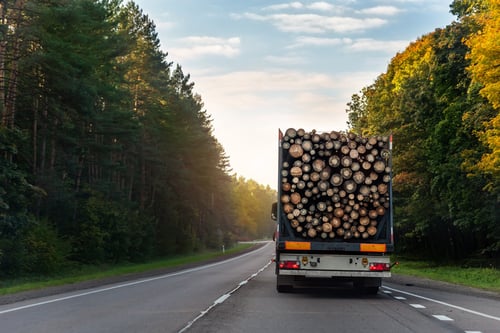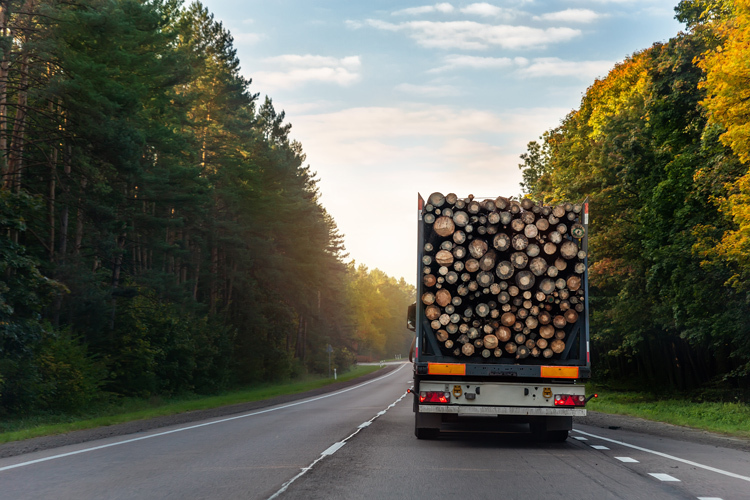What to Know About Cedar Sourcing and Sustainable Forestry Practices
Understanding the Environmental and Economic Benefits
Environmental consciousness and responsible sourcing have become critically important in the lumber industry, and there has been a significant shift towards sustainable forestry practices. This shift is particularly crucial when sourcing cedar lumber, a wood prized for its beauty, versatility, and durability. This blog looks at the importance of sourcing and sustainable forestry practices for cedar lumber, and the ecological significance and economic benefits.

The Appeal of Cedar Lumber
Cedar lumber holds a special place in the construction and woodworking industry due to its exceptional qualities. It is known for its natural resistance to decay and insect infestations, making it a leading choice for outdoor applications such as decks, fences, and siding. The distinctive aroma, unique grain patterns and color make this wood a favorite for indoor projects such as furniture and paneling.
However, the popularity of cedar lumber comes at a price. Over-harvesting and unsustainable practices have led to ecological imbalances and a decline in cedar populations. The lumber industry has turned to sustainable forestry practices as a solution to this issue.
The Importance of Sustainable Forestry
Sustainable forestry is a holistic approach to managing forests that aims to maintain their health, diversity, and productivity while ensuring long-term economic and ecological benefits. When applied to the harvesting of cedar lumber, sustainable forestry helps protects the environment and secures the future supply of this valuable resource.
- Biodiversity preservation: Sustainable forestry practices prioritize the conservation of biodiversity. This involves protecting the habitats of countless species that rely on cedar forests for their survival, creating a balanced ecosystem that contributes to overall environmental health.
- Soil and water conservation: By carefully planning the harvest of cedar lumber, sustainable forestry helps prevent soil erosion, maintain water quality, and safeguard watersheds. These practices also reduce the risk of landslides and flooding in cedar-rich regions.
- Carbon sequestration: Cedar trees play a vital role in sequestering carbon dioxide from the atmosphere. Sustainable forestry ensures that cedar forests remain a potent carbon sink, helping to mitigate climate change.
- Regeneration: Sustainable practices include reforestation efforts to replace the trees that are harvested. By replanting cedar saplings and allowing them to mature naturally, the supply of cedar lumber is maintained for future generations.
The Cedar Lifecycle
Understanding the cedar lumber lifecycle is critical to understanding the significance of sustainable forestry practices. Here’s how it typically works:
- Seedlings: Cedar trees start as seedlings planted in cedar nurseries. These nurseries are essential for ensuring a consistent supply of cedar trees.
- Growth and maintenance: Over the course of several decades, cedar trees grow and are periodically pruned to encourage straight and knot-free lumber.
- Harvest: When mature, cedar trees are selectively harvested using sustainable techniques. This process includes the careful selection of which trees to cut, leaving behind the healthy ones.
- Processing: The harvested cedar logs are milled and processed into lumber, siding, or other products according to the needs of the lumber industry.
- Replanting: After the harvest, the cycle continues as new cedar seedlings are planted to regenerate the forest.
Economic Benefits
The adoption of sustainable forestry practices for cedar lumber isn’t just an environmental choice; it’s a smart economic decision as well. Let’s look at the key reasons:
- Market demand: Consumers are increasingly inclined towards environmentally responsible products. Cedar lumber sourced from sustainable forestry practices caters to this consumer demand, making it more attractive to a broader customer base.
- Long-term profitability: Sustainable forestry practices ensure that cedar forests remain productive and provide a steady supply of wood. This long-term perspective ensures the economic sustainability of the industry.
- Regulatory compliance: Compliance with environmental regulations and certifications is essential in today’s lumber market. Sustainable forestry practices help cedar lumber suppliers meet these standards, which can open new markets and business opportunities.
Cedar Harvesting Times in the Northeast U.S.
The timing of cedar harvesting in the Northeast U.S. plays a crucial role in ensuring the health and vitality of cedar forests while meeting the demands of the lumber industry.
The Northeast is home to various species of cedar, but the most prevalent is northern white cedar. To minimize the ecological impacts and in support of sustainable practices, cedar harvesting is carried out during specific times.
- Late fall to early spring: This is considered the optimal time for cedar lumber harvesting in the Northeast. During the late fall and early winter months, cedar trees are dormant, which means they are less likely to be stressed by the felling process. This minimizes the risk of diseases and insect infestations that can negatively affect the remaining cedar population.
- Seasonal considerations: Cedar harvesting practices are closely linked to the seasonal weather conditions in the Northeast. Snow cover and frozen ground can provide better access to cedar stands, reducing damage to the forest floor and minimizing soil erosion. In addition, reduced vegetation in late fall and early spring makes the process of felling and transporting cedar logs easier.
- Regulatory compliance: Harvesting times in the Northeast are often regulated by state forestry agencies and conservation organizations. These regulations are designed to ensure that cedar harvesting occurs in a manner that preserves the forest ecosystem. Compliance with these regulations is essential to sustainable forestry practices.
- Wildlife considerations: Cedar stands in the Northeast are home to a variety of wildlife, including birds and mammals. Harvesting during the dormant season, when many species have migrated or are less active, helps protect their habitats and minimizes disturbances. Sustainable forestry practices often involve creating buffer zones or wildlife corridors to protect these ecosystems.
- Weather dependency: The timing of cedar harvesting in the Northeast can be weather-dependent. Unpredictable weather patterns, such as early snowfall or late spring thaws, can influence when harvesting can take place. Sustainable forestry practices adapt to these weather variations to minimize damage to the forest and ensure safety for workers.
As consumers and businesses increasingly prioritize environmentally responsible choices, the lumber industry’s shift toward sustainability is more critical than ever. Responsible sourcing and sustainable forestry practices—including the careful timing of harvests—preserve the health of cedar forests, protect wildlife habitats, and minimize ecological impacts, while ensuring long-term supply. Sustainable cedar lumber is a win-win scenario that benefits the environment as well as the lumber industry’s bottom line.
AVO Fence & Supply is a provider of high-quality fencing materials and supplies with locations in Stoughton, Plymouth, and Hingham, MA. We are dedicated to sharing our expertise with homeowners and contractors in the New England area. Give us a call today at (781) 341-2963.

